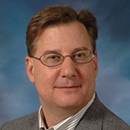August 2014

Thomas Ferkol, MD
Early in my career, I was told that as a clinician, I would be able to help one child at a time, which is important. But as an investigator, my work would have the potential to simultaneously help tens, hundreds, perhaps even thousands of children with lung disease around the world. While an academic career in biomedical research can be challenging, it can be extremely gratifying, especially when the discoveries we make change the lives of our patients.
Indeed, the opportunities for improving lives through research are seemingly limitless. Newer technologies, computational modeling, and systems biology are revealing the complex interactions between genes and gene products in health and disease. These discoveries, in turn, have led to scientific breakthroughs and novel treatments for children and adults. However, our progress is threatened by a growing shortage of young scientists, physicians, and nurses who enter into careers in pulmonary, critical care, and sleep research.
Recently, the National Institutes of Health Advisory Council to the Director convened the Physician-Scientist Workforce working group to analyze the current U.S. clinician-scientist workforce to understand the effect of NIH funding policies on biomedical research. The group found that the physician-scientists workforce comprises a smaller fraction of the medical workforce today than it did a decade ago. Consequently, the median age of independent investigators with a Research Project Grant (R01) has grown gradually older. The age of applicants for Mentored Clinical Scientist (K08) and Patient-oriented (K23) Research Career Development Awards is also increasing, resulting in an expanding funding gap for early career investigators.
The working group concluded that if this trend continues, a “robust” clinician-scientist workforce cannot be maintained. The NIH is now exploring alternative approaches to supporting young clinician-scientists to facilitate their transition from training to research independence.
The American Thoracic Society must also do what it can to address many of the issues that hinder recruitment and retention. It is critical that our clinician-scientists succeed, especially those who are just starting their careers as investigators. The ATS Academy was created in part to recognize and support young academic scientists and clinician-investigators in their efforts to study and treat pulmonary disease, critical illness, and sleep disorders in children and adults.
During the past decade, the ATS Foundation Research Program has supported over 120 early career investigators worldwide. Last year, the Foundation created an awards program to “bridge” our younger colleagues as they transition from Institutional Training Grants (T32) to Career Development (K) Awards—a program that we will continue this year.
Similarly, our assemblies are recognizing and encouraging our talented early career members, acknowledging their efforts through various awards. These award recipients will be among our first class of ATS Scholars. Several ATS committees are forming programs for faculty development to help our younger members advance their careers in an academic environment. It is still early, but I am hopeful that the ATS Academy will provide our early career members with a needed edge.

